Search
Search Results
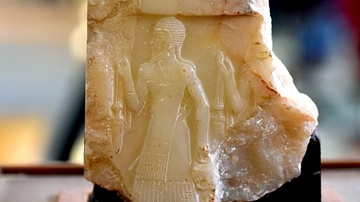
Image
Akkadian Soldier on Naram-Sin Victory Stele from Wasit
This alabaster stele (with different registers) was fragmented when originally found and only three fragments have survived; two are in the Iraq Museum in Baghdad and one is in the Museum of Fine Arts, Boston, USA. The stele commemorates...
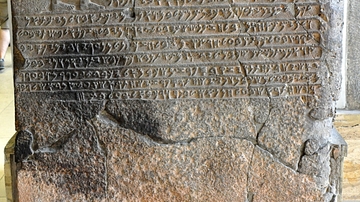
Image
Stele of Prince Kilamuwa from Sam'al
This basalt stele was inscribed with Phoenician language. The upper part of the stele depicts Kilamuwa praying in front of symbols of deities. Circa 825 BCE. From one of palaces at the citadel of Sam'al/Zincirli, modern-day Southern Turkey...
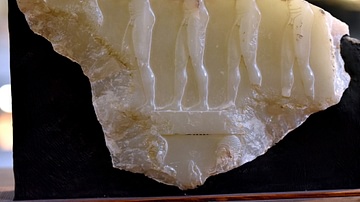
Image
Naram-Sin Victory Stele from Wasit
This alabaster stele (with different registers) was fragmented when originally found and only three fragments have survived; two are in the Iraq Museum in Baghdad and one is in the Museum of Fine Arts, Boston, USA. The stele commemorates...
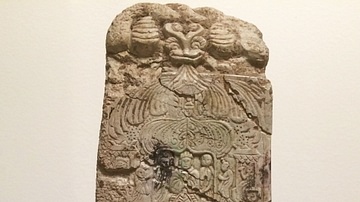
Image
Buddhist Stele from Wei Dynasty China
The portative stele depicts scenes from the life of Buddha. It was made from white marble in northern China during the Northern Wei dynasty (386-524 CE). A date marker on this stele indicates that it was created during the first year of the...
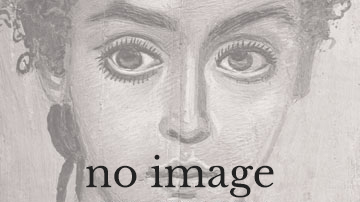
Video
Grave stele of Hegeso, c. 410 B.C.E.
More free lessons at: http://www.khanacademy.org/video?v=YUzsxLi43gE Grave stele of Hegeso, c. 410 B.C.E., marble and paint, from the Dipylon Cemetary, Athens, 5' 2" (National Archaeological Museum, Athens) Speakers: Dr. Steven Zucker and...

Video
The Law Code Stele of King Hammurabi
The Law Code Stele of King Hammurabi, 1792-1750 B.C.E., basalt, 225 x 65 cm (Louvre, Paris). Speakers: Dr. Steven Zucker and Dr. Beth Harris

Definition
Ҫatalhöyük
Ҫatalhöyük is one of the largest Neolithic settlements ever discovered. Built more than 9000 years ago in modern Konya Plain, central Turkey, it is known in archaeology as a proto-city, a link between the cave-dwellings of prehistoric hunter-gatherers...
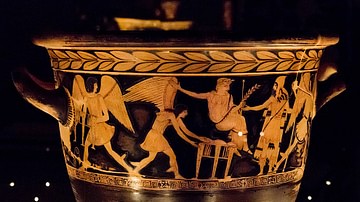
Definition
Harpy
A harpy, also known as a harpyia (pl. harpyiai), is a part-bird, part-woman monster in Greek mythology. Known as the 'Hounds of Zeus,' they were the personification of storm winds and were under the command of Zeus, who would send them out...

Image
Victory Stele of Naram-Sin
Victory Stele of Naram-Sin, king of Akkad. c. 2250 BCE. Brought from Sippar to Susa in the 12th century BCE. Restored in 1992 CE. (Louvre Museum, Paris)
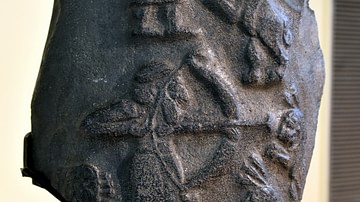
Image
Stele of Lion-Hunt from Uruk
Stele of a lion-hunt from Uruk, the oldest narrative Mesopotamian sculpture (in relief) and the first documented evidence of lion-hunting in Mesopotamia. It depicts two men hunting lions using a spear and arrows. One man is smaller than the...